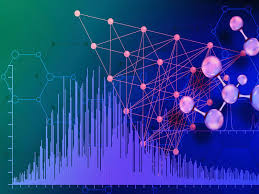In the realm of Bioinformatics, where the language of biology converges with the precision of data analysis, statistical techniques play a pivotal role in extracting meaningful insights from the vast sea of biological information. This blog will serve as a comprehensive guide to the fundamental statistical techniques that form the backbone of Bioinformatics research.

Descriptive Statistics: Painting a Picture
- Descriptive statistics provide a preliminary glimpse into the characteristics of a dataset. Measures such as mean, median, and mode offer central tendencies, while measures of dispersion like standard deviation and range illuminate the spread of data. In Bioinformatics, descriptive statistics aid in summarizing complex biological datasets, facilitating a clearer understanding of the underlying patterns.
Probability Distributions: Understanding Uncertainty
- Probability distributions model the likelihood of different outcomes in a given set of circumstances. In Bioinformatics, understanding the distribution of biological data is crucial for making predictions and assessing the significance of observed patterns. Common distributions include the normal distribution, binomial distribution, and Poisson distribution, each finding its application in specific biological contexts.
Hypothesis Testing: Deciphering Significance
- Hypothesis testing is the backbone of statistical inference, allowing researchers to draw conclusions about a population based on a sample of data. In Bioinformatics, this technique helps determine the significance of observed differences or associations, such as identifying genes that are differentially expressed under various experimental conditions. Common tests include t-tests, chi-square tests, and ANOVA.
Correlation Analysis: Unveiling Relationships
- Correlation analysis explores the relationships between variables, unveiling patterns of association or dependence. In Bioinformatics, correlating gene expression levels, for instance, can reveal potential regulatory networks or identify genes that act in concert. Techniques like Pearson correlation and Spearman rank correlation are frequently employed to assess the strength and direction of relationships.
Regression Analysis: Predictive Modeling in Bioinformatics
- Regression analysis extends the exploration of relationships by enabling the prediction of one variable based on the values of others. In Bioinformatics, regression models can be employed to predict gene expression levels or understand the impact of various factors on biological processes. Linear regression, logistic regression, and Cox regression are common tools in this realm.
Clustering and Classification: Grouping Biological Entities
- Clustering and classification techniques are pivotal in Bioinformatics for grouping similar biological entities or classifying samples into distinct categories. Methods like hierarchical clustering, k-means clustering, and machine learning algorithms such as support vector machines and random forests are employed for tasks like identifying molecular subtypes or classifying disease states.
In the intricate landscape of Bioinformatics, basic statistical techniques form the cornerstone for unraveling the mysteries encoded in biological data. Descriptive statistics provide a canvas for initial exploration, probability distributions frame the uncertainty inherent in biological systems, and hypothesis testing enables researchers to discern meaningful signals. Correlation and regression analyses pave the way for understanding relationships and making predictions, while clustering and classification techniques offer insights into the grouping and categorization of biological entities.
As researchers continue to delve into the vast expanse of biological information, a solid foundation in these basic statistical techniques equips them with the tools needed to navigate the complexities of the biological world and extract meaningful knowledge for the betterment of science and medicine.
-Thank you
